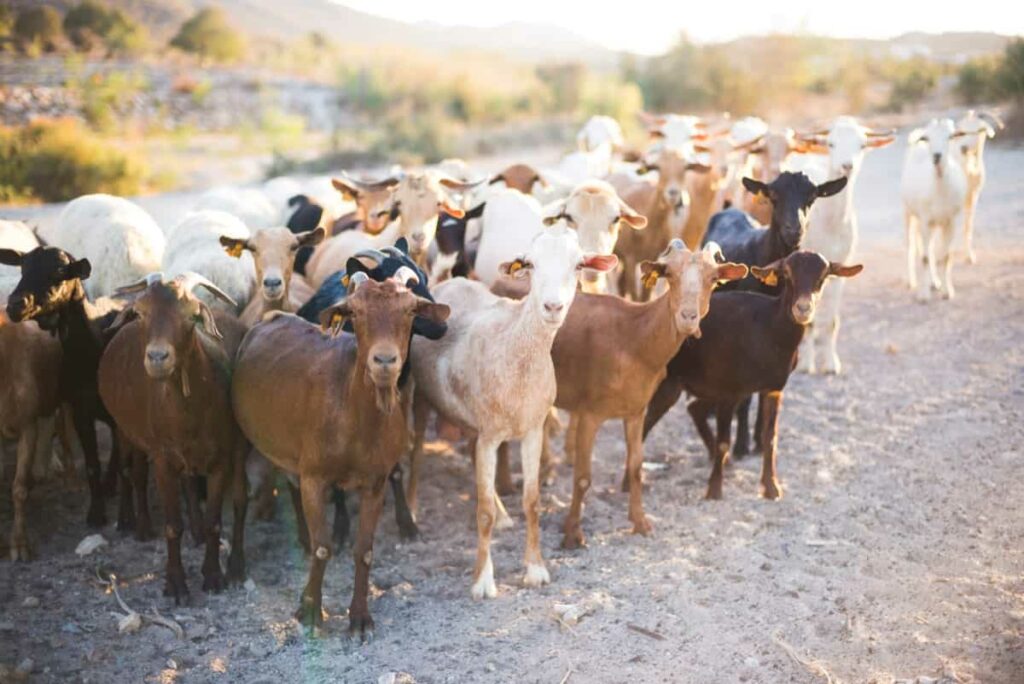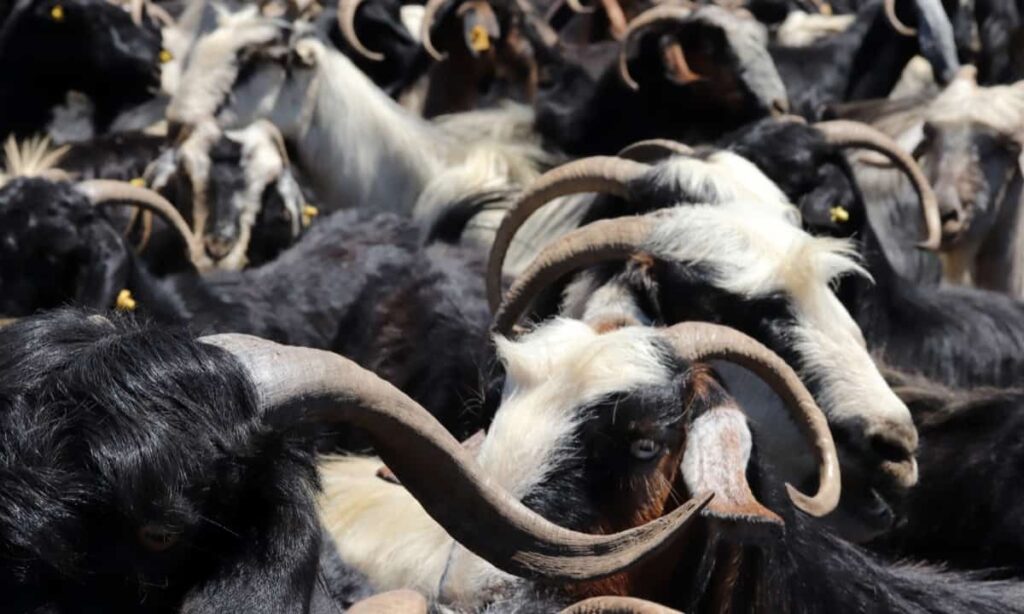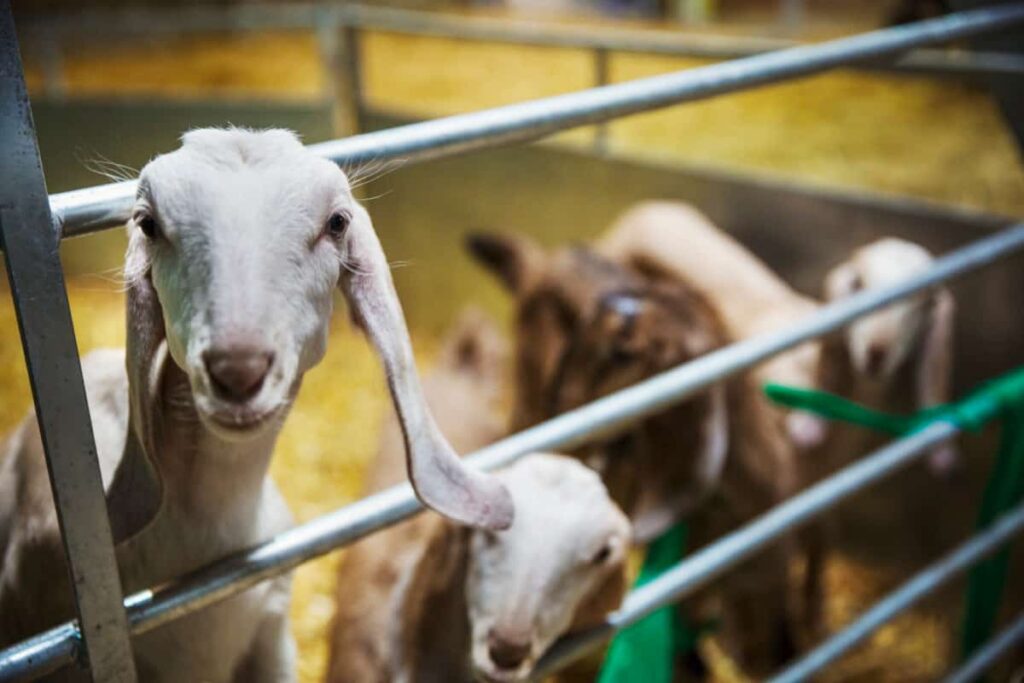Chhattisgarh! This blog provides a simple, easy-to-read, and formal overview of this rewarding venture. We will cover essential topics such as the best goat breeds for profitability, step-by-step guidance to start your farm, inspiring success stories from Chhattisgarh, crucial equipment required, and tips on goat feed and nutrition. Additionally, we’ll explore available grants and subsidies, expert advice on housing and shelter, effective selling and marketing strategies, and ways to tackle common challenges.

Goat Farming in Chhattisgarh: Best Breeds for Profit
- Boer Goat: Known for its rapid growth and excellent meat quality, it is a popular choice among farmers for its high market demand and fast weight gain.
- Sirohi Goat: Indigenous to Rajasthan but well-adapted to Chhattisgarh’s climate, Sirohi goats are hardy and require minimal care while offering good meat and milk yields.
- Osmanabadi Goat: Originating from Maharashtra, this breed is highly suitable for meat production, and their ability to thrive in semi-arid conditions makes them a valuable asset for Chhattisgarh farmers.
- Barbari Goat: With high twinning rates and a good growth rate, Barbari goats are ideal for meat and milk production, making them a versatile choice for sustainable farming.
- Jamunapari Goat: Known for its high milk yield and strong adaptability, Jamunapari goats are an excellent choice for farmers seeking meat and milk production.
How to Start Goat Farming in Chhattisgarh: A Step-by-Step Guide
Starting a goat farm in Chhattisgarh can be a rewarding venture. To get started, follow these steps: research and plan, choose the right location, procure quality goats, build secure shelters, ensure proper nutrition, consult a veterinarian for vaccinations, health checkups, and disease prevention, learn breeding management, maintain detailed records of goat health, breeding, and financial transactions, establish contacts with local buyers, restaurants, or markets, and continuously learn and grow. This beginner-friendly guide will help you navigate the goat farming process in Chhattisgarh.
Chhattisgarh Goat Farming Success Stories: Inspiring Tales
Goat Farming in Chhattisgarh has seen inspiring success stories, showcasing the potential and profitability of this venture. Mr. Rajesh Patel, a small-scale farmer, expanded his herd from 20 to over 200 goats in just two years, becoming a model for sustainable practices. Ms. Priya Singh, a rural woman, established a goat farm on the outskirts of Raipur, providing premium-quality meat to local markets and employment opportunities. Mr. Gupta, a retired government official, ventured into goat farming as a post-retirement activity and now mentors aspiring farmers in the region.
Goat Farming Equipment in Chhattisgarh: Must-Have Tools
Goat farming is a popular agricultural activity in Chhattisgarh, and essential tools and equipment are necessary for success. These tools ensure the health and safety of goats, as well as the efficiency of the farming operation. Some of the most important goat farming equipment include housing, feeding and watering equipment, shears, weighing scales, veterinary supplies, grooming tools, transporting equipment, and security fencing.
In case you missed it: Innovative Housing and Shelter Designs for Profitable Goat Farming

Housing is crucial for goats to live in a safe and comfortable environment, protecting them from the elements and making them easy to clean and maintain. Feeding and watering equipment should be designed to provide goats with the necessary food and water, while shears are essential for keeping their coats healthy and free of parasites. Weighing scales are crucial for tracking goats’ growth and health and determining the amount of feed and medication needed.
Veterinary supplies are essential for goats to be prepared for various diseases and supply veterinary essentials in an emergency. Grooming tools are essential for maintaining goat health and free of parasites. Transporting equipment is essential for transporting goats to and from the farm, and security fencing can help keep goats contained and prevent them from wandering off.
Chhattisgarh Goat Farming Business Plan: Key Considerations
Before starting a goat farming business in Chhattisgarh, it is crucial to conduct market research to determine the demand for goat products and the expected prices. Choose a suitable breed for the climate and conditions in your area, provide safe and comfortable housing, provide a balanced diet, ensure access to clean water, and have a plan in place for providing healthcare to your goats.
A marketing plan is essential for reaching potential customers and selling your products. Additionally, consider financial resources, time commitment, and risks associated with goat farming, such as disease, weather, and market fluctuations. Following these factors, you can create a goat-farming business plan to help you achieve your goals and establish a successful business in Chhattisgarh.
Goat Feed and Nutrition in Chhattisgarh: Expert Tips
Proper feed and nutrition are essential for the health and productivity of goats in Chhattisgarh. A well-balanced diet promotes optimal growth, milk production, and overall well-being. Local availability plays a significant role in selecting the best feeds. A mix of natural forage and supplementary feeds like wheat bran, rice bran, and oil cakes can enhance nutrition. Access to clean water is crucial, as are mineral supplements for bone development and reproduction. Avoid feeding spoiled or moldy food to prevent health issues.
Chhattisgarh Goat Farming Grants and Subsidies: Opportunities
In Chhattisgarh, goat farmers receive grants and subsidies to improve their farming endeavors. The State Government offers the Livestock Development Scheme, IDSRR, PMFBY, and PMFBY to support the goat farming community. The Livestock Development Scheme provides financial assistance for goat farms, while the IDSRR scheme promotes small ruminants, offering subsidies on feed and breeding materials. PMFBY provides insurance coverage against crop loss due to natural calamities, including feed and fodder crops consumed by goats.
Goat Housing and Shelter in Chhattisgarh: Design and Construction
In Chhattisgarh, goat housing and shelter are crucial for their well-being and productivity. A basic shed should be 10 feet by 10 feet, with a 7-foot height for headroom. Use locally available materials like bamboo, wood, or bricks for construction. Provide 15-20 square feet per adult goat and separate pens for kids.
Incorporate windows and vents for airflow and reduce humidity. Bedding with straw or dry leaves helps keep the shelter clean. Position the shelter away from winds and consider adding rain gutters and drainage for effective water management. Regular maintenance and cleaning are essential for a healthy and comfortable environment for goats, maximizing growth and overall health.
Chhattisgarh Goat Farming Markets: Selling and Marketing Strategies
Chhattisgarh’s goat farming market is thriving, offering lucrative opportunities for farmers. Mature goats are sold at local markets for Rs. 7,000 to 10,000, with premium breeds fetching higher prices. Farmers can maximize profits through effective marketing strategies, including social media and agricultural forums.
In case you missed it: Goat Breeding and Genetics for Improved Productivity and Disease Resistance

Common Challenges in Goat Farming Chhattisgarh: Solutions and Prevention
Goat farming in Chhattisgarh faces challenges such as internal parasites, which affect 80% of goats. Regular deworming protocols, like Albendazole, can combat these issues. Inadequate nutrition, including green fodder, concentrates, and mineral supplements, can reduce growth and productivity.
Conclusion
Goat Farming in Chhattisgarh offers a promising opportunity for farmers. With the right knowledge, dedication, and support, this venture can be a rewarding and profitable endeavor, contributing to the region’s agricultural landscape.
- Goat Milking Practices and Equipment: A Beginner’s Guide
- Goat Farming for Fiber: Producing Mohair and Cashmere
- Maximizing Goat Milk Production: Tips for Dairy Goat Farmers
- Goat Farming as a Family Business: Strategies for Success
- Profitable Kenya Goat Breeds for Commercial Dairy and Meat Business
- Unlock the Secrets of Oberhasli Goat: Discover Raising and Management Practices
- Ultimate Guide to Myotonic Goats: Explore Profile to Raising
- Unlock the Secrets of Rove Goat: Discover Management Practices
- Ultimate Guide to Malwa Goat: Explore from Origin to Management Practices